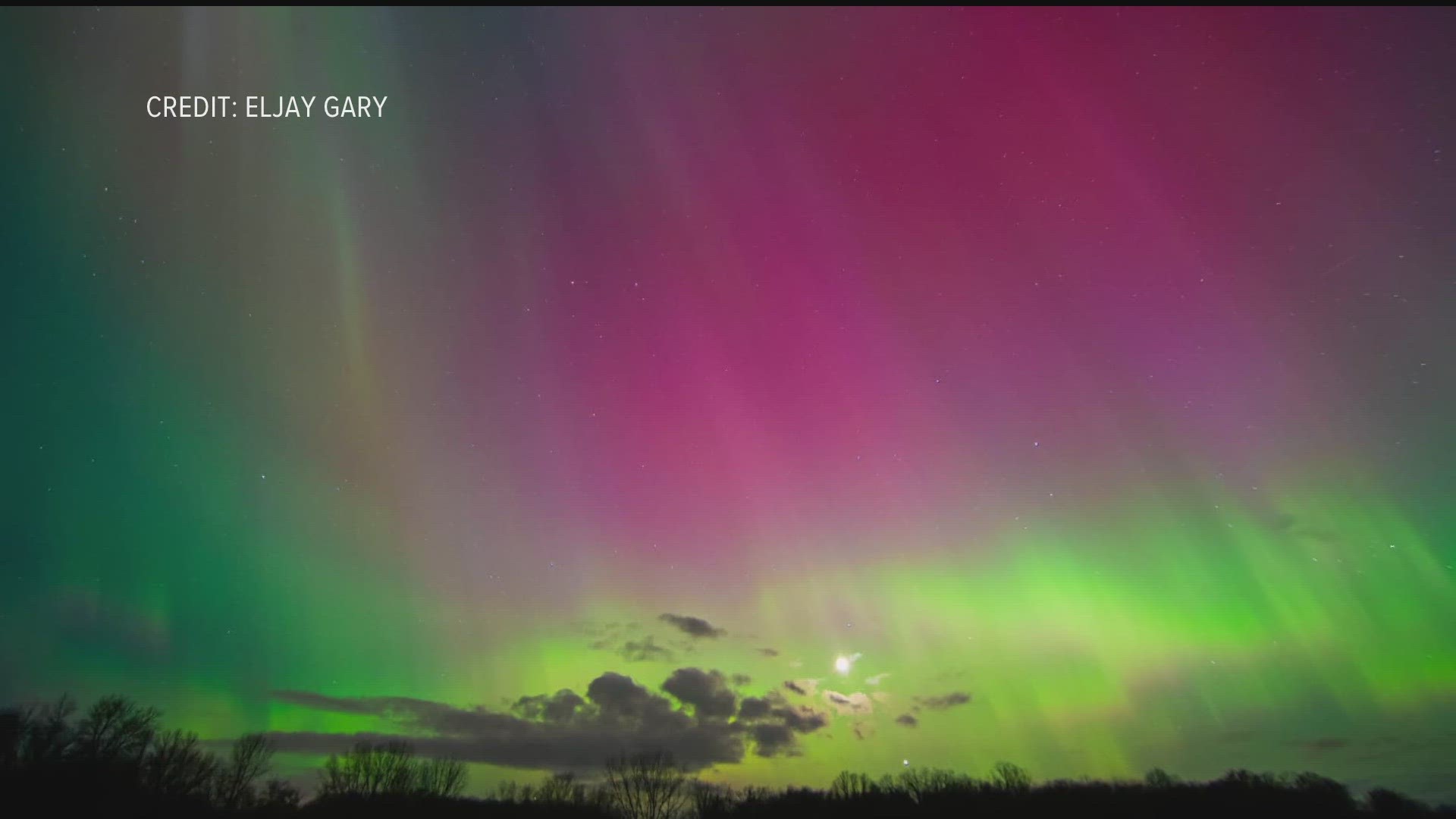CAPE CANAVERAL, Fla. — A major outburst from the sun earlier this week has triggered predictions of an intense solar storm Thursday night into Friday morning that could impact things from power generation to radio communications and space operations.
On the plus side of the ledger, it could also make for a spectacular light show here in Minnesota.
The National Oceanic and Atmospheric Administration (NOAA) has issued a severe geomagnetic storm watch after an outburst from the sun was detected earlier this week. Such a storm could temporarily disrupt power and radio signals.
NOAA has notified operators of power plants and orbiting spacecraft to take precautions. It also alerted the Federal Emergency Management Agency about possible power disruptions, as the organization copes with the devastating aftermath of Hurricane Helene and gears up for Hurricane Milton barreling across the Gulf of Mexico toward Florida.
But with such storms also come the chance for a dazzling display of the Aurora Borealis, better known as the northern lights. Forecasters say the sky may fill with green, pink and blue as far south in the U.S. as the lower Midwest and Northern California, though exact locations and times are uncertain.
KARE 11's John Zeigler says forecasting northern lights from situations like a severe solar storm can be tricky, but the best chance to see them will be from 10 p.m. Thursday to 1 a.m. Friday. Here's the trick, however: Minnesota is expecting clouds to start thickening up after 10 p.m., so the earlier part of that time window should provide the best opportunity to see the northern lights.
Zeigler adds that the geomagnetic storm will also be dropping in intensity around 2 a.m. Friday, from a G4 to a G3.
Besides Minnesota, here are the states NOAA says will offer the best opportunity for viewing the Aurora Borealis.
- Wisconsin
- North Dakota
- Michigan
- Montana
- Idaho
- Washington
- Alaska
If the weather is clear, the best aurora is usually visible within an hour or two of midnight, according to NOAA. The agency maintains an aurora dashboard that should help skygazers track the phenomenon.
Skygazers are reminded to point their smartphones upward for photos; the devices often can capture auroras that human eyes cannot.
Forecasters do not expect the latest solar storm to surpass the one that slammed Earth in May, the strongest in more than two decades. But they won't know for sure until it's just 1 million miles (1.6 million kilometers) away, where spacecraft can measure it.
May's solar storm produced dazzling auroras across the Northern Hemisphere and resulted in no major disruptions.
The sun is near the peak of its current 11-year cycle, sparking all the recent solar activity.

